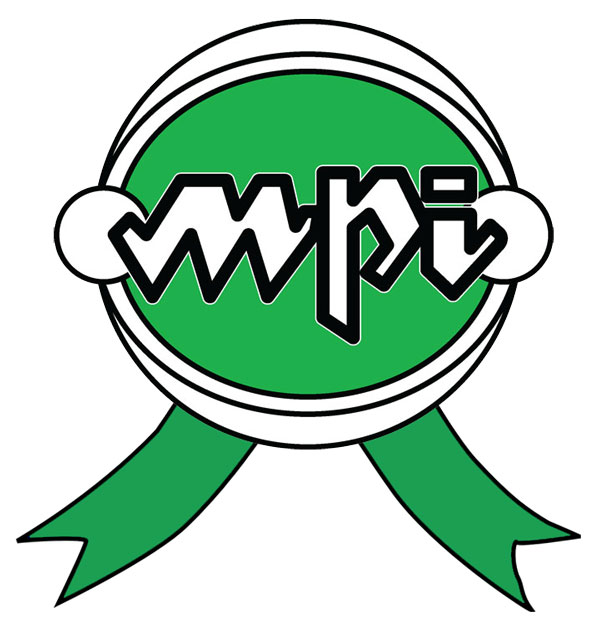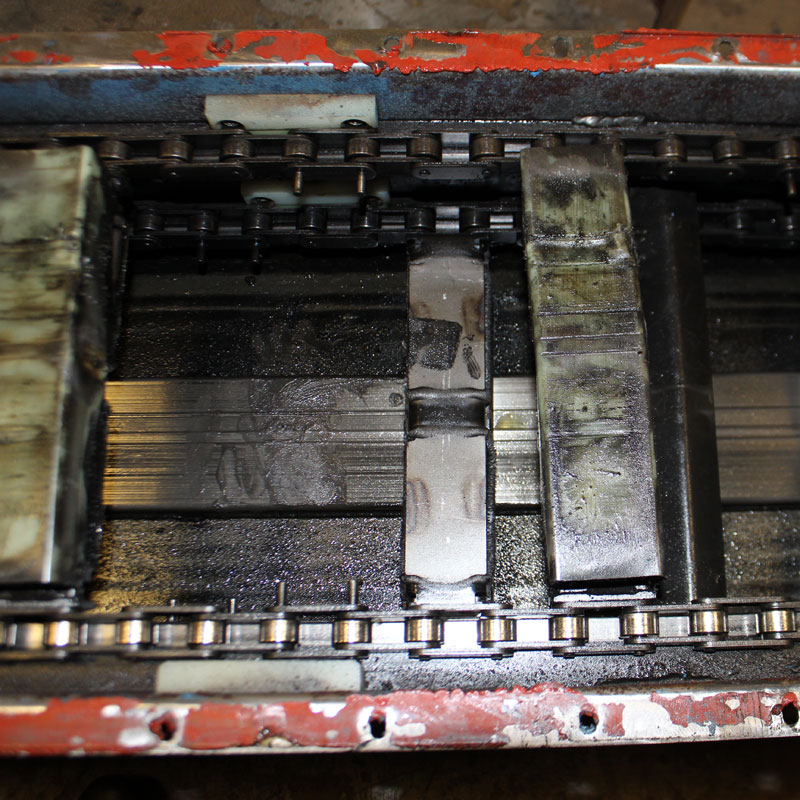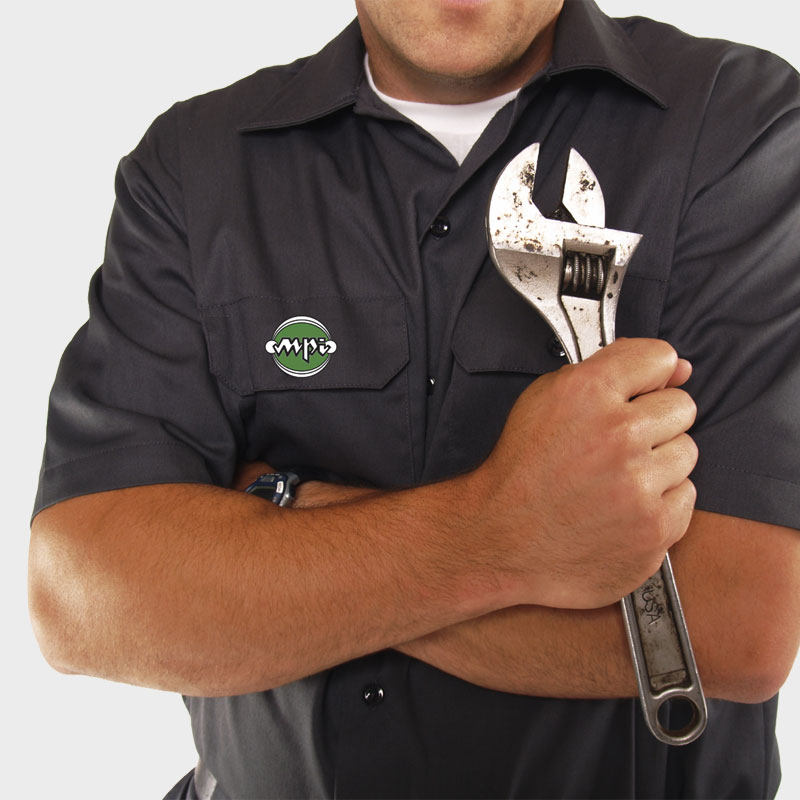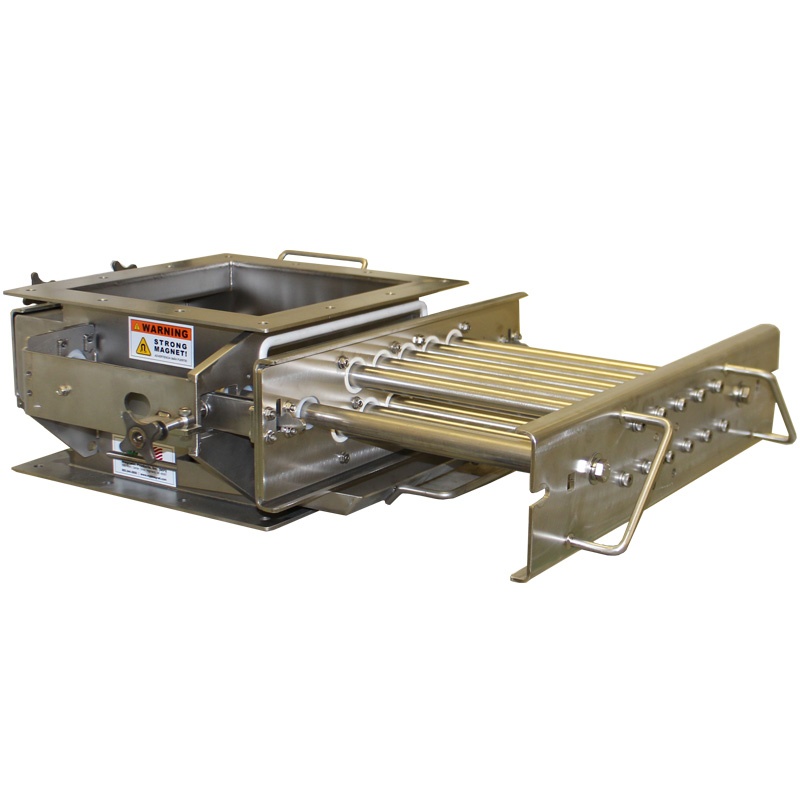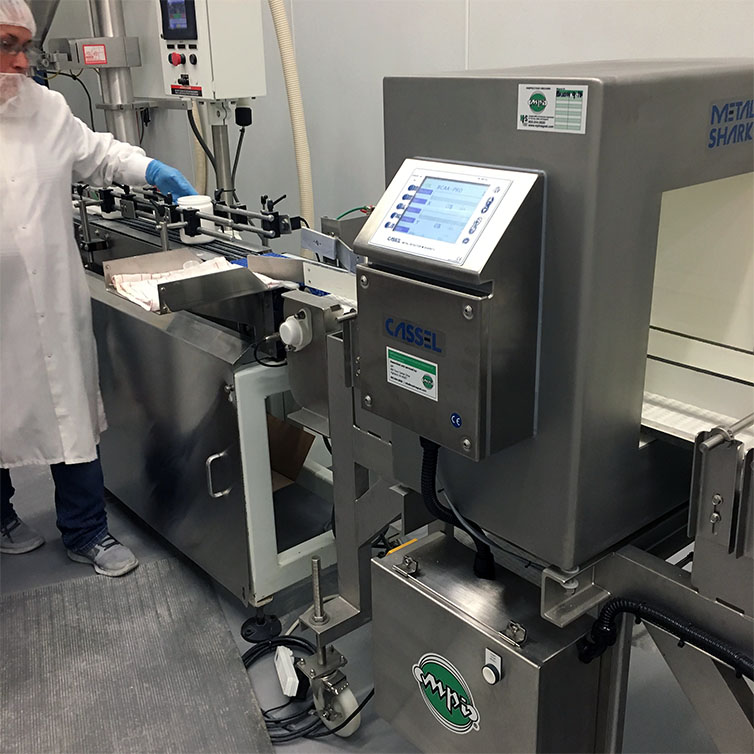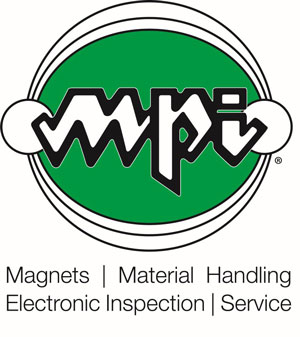Gauss Test vs. Pull Test; What You Really Need to Know
Highland, MI (May 27, 2015) – In a world where people are becoming more aware of product safety and purity, magnet testing is an absolute must for any food facility. There are two methods to measure a magnet’s strength, Gauss and Pull Strength. Both methods can define a magnet’s circuit design and field gradient; we will discuss the difference and when to use each.
Gauss Testing
Gauss measurement is one way to measure a magnet’s field strength. This is accomplished by using a device called a gauss meter, an electronic device that is very sensitive and capable of measuring the lines of flux in a magnet’s working air gap using a hand-held probe. As the probe is moved around the magnet the values will increase/decrease accordingly.
There are a few key factors as to why using a gauss meter is not typically the preferred method in measuring a magnet’s strength. A gauss meter is so sensitive it is nearly impossible to gain a reliable, repeatable value for any given magnet. Because a gauss meter is an electronic device it is susceptible to improper calibration; in fact, most gauss meters need to be re-calibrated between each measurement. Even when using the same properly calibrated gauss meter from test to test and person, the slightest movement of the probe in the magnet’s working air gap will generate a different result or value.
Pull Testing
The other option is to use what is commonly known as a pull test device. In this instance, we are now taking a known ferrous object (typically a sphere or steel ball of a given diameter) and placing it directly on the magnet’s working surface. Attaching the sphere to a scale, we now measure when the ferrous object breaks away from the magnet’s surface. This is typically measured in pounds and/or ounces depending on a few factors such as magnet type (ceramic or rare earth & magnet type Plate or Grate, etc.) for each test. We can also measure the magnet’s gradient or change in magnetic strength as the gap from the magnet’s working surface is increased using a non-ferrous spacer such as aluminum. This becomes important where a magnet is required to capture metals from a distance away from the magnet’s surface.
After more than 30 years conducting customer plant audits we have found the pull test method meets the most stringent quality programs such as HACCP, TQM, BRC, etc. and the data is very useful to the end user customer in prioritizing future magnet upgrades to meet the ever increasing higher quality standards used today. We also find the pull test is an easy method we can train our customers to use for self-auditing and this autonomy is very beneficial where magnets are considered a critical component of the customer’s quality program.
Let’s close by also bringing up the subject of documentation. At MPI we feel strongly that a good metal control program includes proper documentation of magnet inspection intervals, metals captured and current conditions and/or concerns for all magnets used in a process.
About Magnetic Products, Inc.:
Based in Metro-Detroit Michigan, MPI designs, manufactures and services magnets, material handling and electronic inspection systems. MPI products are designed to be complete metal and foreign contamination control solutions for the food production and related industries. MPI’s equipment and service programs help its customers minimize downtime and protect brand integrity by offering safe and reliable equipment. MPI leads the industry by continuously engineering inventive products, advancing customer education through significant investments in research and development, and proactive product training. All MPI equipment is backed by its best in class service programs, customer service team, and support team. MPI interacts closely with its customers and expands its offerings to meet the changes of a dynamic and ever-changing marketplace.
For further information, visit www.mpimagnet.com.


